Andres Torres' Swing
People are understandably interested in the swing of
my
client Andres Torres, how it has changed over the years, and how
I helped him make those changes. As a result, I have put this piece
together to explain how Andres swing has evolved over the years and
how that has affected his performance, both positively and
negatively.
Andres and Rotational Hitting
Before I get into how and why Andres' swing has changed,
let me first address a misconception about
Rotational
Hitting. One way that people criticize Rotational
Hitting is that they say that, while it may be appropriate
for larger hitters, it isn't appropriate for hitters who are
of more average size. To that I say I taught 5'9" and
190 pound Andres Torres the same stuff that I teach my 6'4"
and 230 pound clients. I did that because all
bodies, regardless of their size, move basically the same
and because physics are physics.
Andres and the Texas Rangers
After he was drafted, Andres' coaches saw his speed and ability to
hit from the left side and tried to turn him into Ichiro Suzuki.
That meant that from the left side of the plate he would basically slap
everything into the ground and try to beat out the throw with his speed.
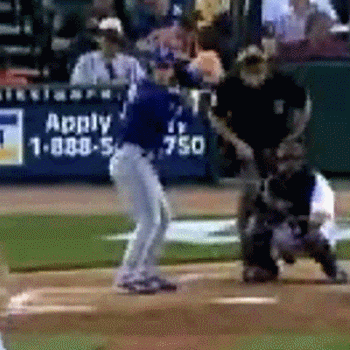
Andres Torres
With the Texas Rangers
Even when he went from the right side, Andres still had a very
disconnected, push-y, throw the hands at the ball,
linear swing that worked in the minor
leagues but that didn't work against major league pitching and defenses.
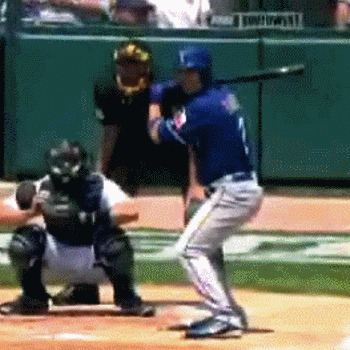
Andres Torres
With the Texas Rangers
In the clip above, notice how Andres' back elbow slides forward
of his back hip as he tries to pull the knob to the ball. That
causes him to hit the ball much farther out front than is typical,
which keeps him from being able to hit the ball hard.
2008-2009
Andres first contacted me in May of 2008 after viewing my
hitting flipbooks of Albert Pujols' swing. That led to a number
of long conversations about what Albert Pujols did and why.
I
then sent Andres a copy of my
Rotational Hitting 101 DVD and gave him access to
my
client-only web site. During the off-season Andres worked on the concepts, and
used the drills, that I use. He totally revamped his swing and
approach and by January 2009 his swing looked nothing like
his swing with the Rangers.
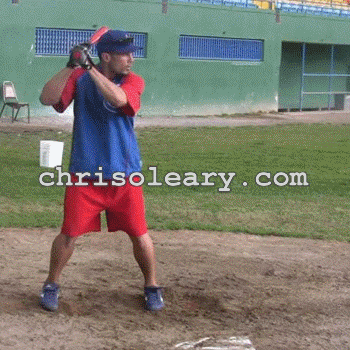
Andres Torres
January 2009

Andres Torres
January 2009
2009
During Spring Training of 2009, Andres made an additional tweak
to his swing; he stopped using the big, Alfonso Soriano style leg
kick that he had been using and instead started using a small
double-tap like Chipper Jones and Carlos Beltran.
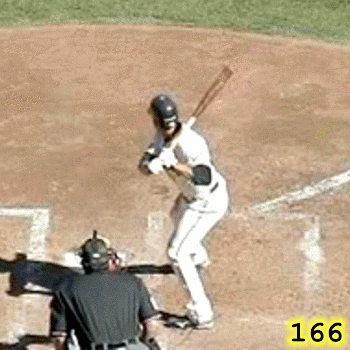
Andres Torres
Home Run to Right Field
October 2009
While some people would say that you have to use a large stride
to hit the ball hard, Andres found that that wasn't the case. For
instance, The clip above shows Andres using his double tap and clanging a home run off the
top of the right
field foul pole in San Francisco. He missed another splash hit into
McCovey Cove by just a few inches.
2010
In 2010, and in an effort to hit for more power, Andres changed
his stride and went to a small leg lift.
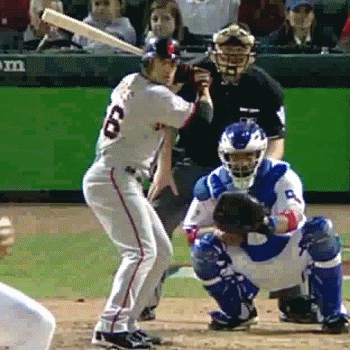
Andres Torres
Home Run to Right Field
Game 3
2010 World Series
This largely worked as long as he didn't try to do too much with
the ball; as long as he just tried to hit the ball hard and well and
let doubles and home runs just happen.
2011
In 2011, and in an effort to try to hit more home runs,
Andres went back to the Alfonso Soriano style, big leg kick that he
has played with off and on over the years.
While this big leg kick did work to a degree, it also hurt his consistency by
creating a problem with his back foot. In the clip below, notice how, as Andres reaches
the top of his leg lift, his weight shifts onto the heel of his back foot.

Andres Torres
Grand Slam Home Run to Right Field
June 2011
As a result, when Andres' hips fire, his back foot squirms around much more than you
see in a good swing. That reduced the efficiency of his swing — the
home run above just squeaked over the wall in right field — and
forced him to have to swing harder. That in turn reduced his
consistency and killed his batting average.
January 2012
Andres flew me down to Arizona in late January, 2012 so that I
could see where his swing was and so that we could figure out what he still needed to
work on.
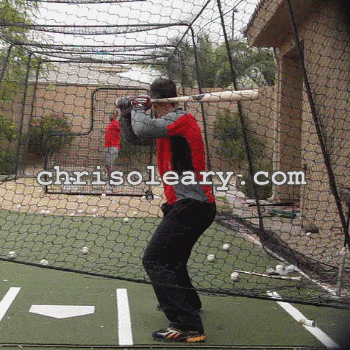
Andres Torres
January 27, 2012
You can see from the clip above, of Andres absolutely destroying a
ball, that the problem with his
back foot, and his weight going back onto his heels, is largely
fixed. Andres is also loading more and better, due in part to his
going back to doing some things that had previously been coached out
of him.
Andres still has an occasional small problem with his posture and
staying too upright and not tilting enough, which is why he didn't
cover the entire strike zone as well as he needed to last year. He's
also fighting a tendency to lunge at balls outside, which causes his
back knee to extend too much.
However, he knows what he needs to do to fix those problems.
I and others have also been working on
convincing Andres that his job isn't to hit home runs, but to hit the
ball hard, get on base, and put pressure on the defense with his speed. I believe that Andres has taken that message to heart and
I am hopeful that he will have a good, if not very good, 2012 season.
March 2012
I managed to get my hands on some clips of the triple to right center field that Andres hit yesterday. It probably would have gone 450 feet if it hadn't been hit directly into a strong wind. As it was, it hit at the base of the wall.

Andres Torres
March 6, 2012
Andres has fixed the few lingering problems that he had in January.
While his weight goes back and his back toe still pops up a bit, the stability of his back foot is much improved over 2011 and he is back to where he was in 2010. His back leg is also working well, with no sign of excessive extension in his back knee.
Andres does a good job of loading his hands and doing so late; as his front foot goes forward and into heel plant. This swing is also an example of pretty much perfect Tilt and Alignment, which is why the ball went as far as it did.
October 2012
Andres finished up the season hitting .230 with an OPS+ of 85 and
put up an rWAR of 1.2 and a fWAR of 1.7. That means that he earned
his $2.7 million salary three times over, producing $7.6 million of
value.
While Andres started off well after coming back from his injury, he struggled through the middle of
the year, in part because he was trying to do what he was told and
stop trying to pull the ball and just put the ball in play. However,
that just resulted in ground ball outs. He also struggled due to his trying to tweak his swing
mid-season. That hurt his timing and his consistency.
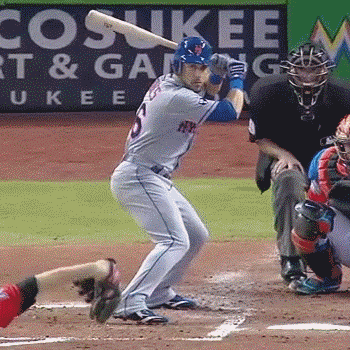
Andres Torres
Home Run to Right Field
October 3, 2012
In September, Andres went back to the approach that he used in
2010, which was trying to hit the ball hard. Andres ended up getting
hot toward the end of 2012, to the point where he had a power surge
at the end of 2012 and his last hit was a home run.
|
Rotational Hitting 101 DVD
My Rotational Hitting 101 DVD explains
the concepts that I taught to Andres Torres that help
him revamp his swing and turn his career around.
|
Other Players
Andres Torres isn't the only professional baseball player that I
have worked with.
At last count, I have one other client in the major leagues, four clients at AAA,
three clients at AA, many more
clients in the lower levels of the affiliated minor leagues, and
multiple clients playing for independent minor league teams and trying
to get back on the road to the major leagues. I have also worked
with a number of D-1 college baseball and fast pitch softball
players.
I don't give out the names of these players because I don't want
to get them in trouble with their coaches. While they, and I,
believe in what I teach, most of the time it contradicts what their
coaches are saying, so they have to keep it to themselves that we
are working together.
If you are a minor leaguer and are
looking for help,
e-mail me and we can talk about how you can get access to my
client-only web site.
|









